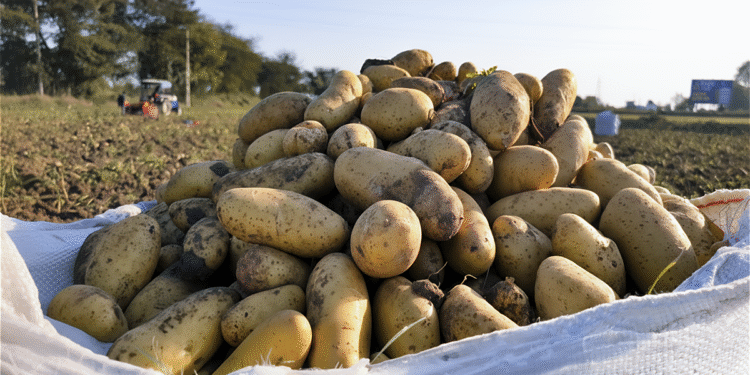India, 2025: India today ranks among the world’s largest potato producers – yet in processing- grade potatoes, sheer volume does not equal value. What truly sets global leaders apart is consistency: the ability to deliver potatoes with the right dry matter, size uniformity, shape, skin finish, and fry colour — season after season.
And that consistency does not begin at the factory gate. It begins much earlier – in the seed we select, the soil we nurture and the crop management we practice. In the processing value chain, quality is not a post- harvest correction, it is a pre- harvest discipline.
That is the essence of HyFarm’s “Seed-to-Shelf approach” — treating quality as a continuum that begins at seed multiplication, matures through scientific commercial crop and storage practices, and culminates in the perfect French fry on the consumer’s plate
S. Soundararadjane, CEO, HyFarm, says, “Around 80% of quality issues in processing-grade potatoes can be prevented right in the field. Cold stores preserve quality — they cannot cure defects. Field-level quality assurance lays the foundation for healthy, high-quality tubers that meet the exacting standards of processors and consumers alike.”
Amongst India’s processing varieties, Santana stands tall as the backbone of the French-fry segment. Extensively cultivated across Gujarat’s potato belt — Mehsana, Palanpur, and Himmatnagar — Santana is prized for its uniform size, high dry matter, and excellent fry colour. Yet, maintaining these attributes from April to December in the subtropical climate of North Gujarat is a demanding task. Fluctuating temperatures and humidity can erode months of hard work. Preserving Santana’s processing quality requires discipline and precision at every step — from seed to cold store.
It all begins with the Seed
Seed handling is the first and most decisive step in ensuring quality. Tubers must be stored in well-ventilated areas to avoid premature sprouting or fungal growth. Diseased or damaged seed must be discarded, and chemical treatment applied uniformly to every surface. Each cut piece should have at least two active eye buds to ensure even germination. Sanitized knives, proper aeration, and careful handling prevent disease spread and physiological stress — the earliest forms of “hidden loss” in the value chain.
Precision in Planting
When the planting begins, precision defines success. The soil must be finely tilled for texture and drainage, with fertilizer guided by soil testing to ensure balanced nutrition. For e.g., for Santana, an optimal depth of 5.5 to 6 inches prevents greening, while row spacing of 30–46 inches promote aeration and healthy tuber growth. Timing is equally critical — seeds planted in soil with the right moisture and temperature produce uniform stands, consistent fry colour, and better yield.
S.Soundararadjane, CEO, HyFarm, adds, “Throughout the growing season, every decision a farmer makes — from irrigation to nutrient management — directly influences the quality of the final harvest. Precision irrigation through drip systems ensures uniform moisture and efficient nutrient absorption, preventing fluctuations that affect tuber development. Fertilizer programs must be guided by soil tests, using sulphate of potash (SOP) instead of muriate of potash (MOP) to improve fry colour and enhance the shelf life of processed products.”
Managing growth with Science
Balanced application of nitrogen and calcium nitrate helps boost dry matter content, strengthen tuber structure, and improve overall solids. Equally vital is disease and pest management — preventive sprays against early and late blight safeguard canopy health, while seed treatments keep soil-borne pathogens like Scab and Rhizoctonia under control. Maintaining varietal purity through rogueing — removing off-type or virus-infected plants within 30 to 40 days — curbs the spread of viruses such as PVX, PVY, and PVS. Farmers who actively monitor weather variations, soil moisture, and pest dynamics are better equipped to make timely interventions, ensuring that the crop remains healthy, uniform, and resilient through the season.
It is during the harvesting season where months of effort meet their test. The right time is when the vines have yellowed and dried and the potato skin resists peeling when rubbed – a sure sign of maturity and disease resistance.
Experts recommend to harvest in moist but not wet soil, during cooler hours of the day, using adjusted harvester belts to minimize bruising. Tubers must be handled gently and transported in clean, ventilated vehicles, with varieties kept separate for full traceability. Lastly, before storage, potatoes undergo one final quality test – sorting and grading. Tubers with cracks, scab, greening, or mechanical injury must be removed; even a single rotten potato can infect an entire lot. Undersized tubers (below 35 mm) are graded out to maintain processing uniformity. During transport, gentle handling prevents black spots and internal browning. Clean, cushioned vehicles and quick transfer to cold stores preserve quality and extend shelf life.
Quality is a Shared Responsibility
For India’s French-fry industry, the journey to global excellence begins not in the plant but in the field. Every step — from aerating seed stores to loading trucks — defines the quality that reaches international markets. If farmers and processors collaborate to cut post-harvest losses by even a few percentage points through scientific, field-driven assurance, the economic and reputational gains could be transformative.
With the right science, care, and commitment, Gujarat’s Santana can not only meet but set global benchmarks — proving that every great French fry is indeed grown, not made.
About HyFarm
HyFarm, the agri-business unit of HyFun Foods has robust business linkages through its farmer connect initiative, with its innovative contract farming model, which aids in seamless production & procurement of processing-grade potatoes (French Fries & Crisps) and Table Potatoes.
HyFarm envisages to collaborate with 30,000 farmers & work towards achieving an ambitious procurement target of one million metric tonnes of potatoes by 2028 in India. Moreover, HyFarm is also speeding towards expanding its presence into procuring a diverse range of fresh fruits and vegetables.





































